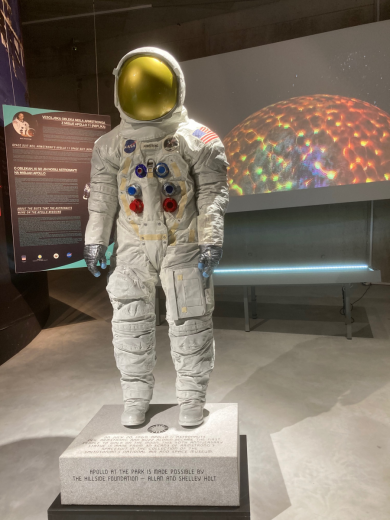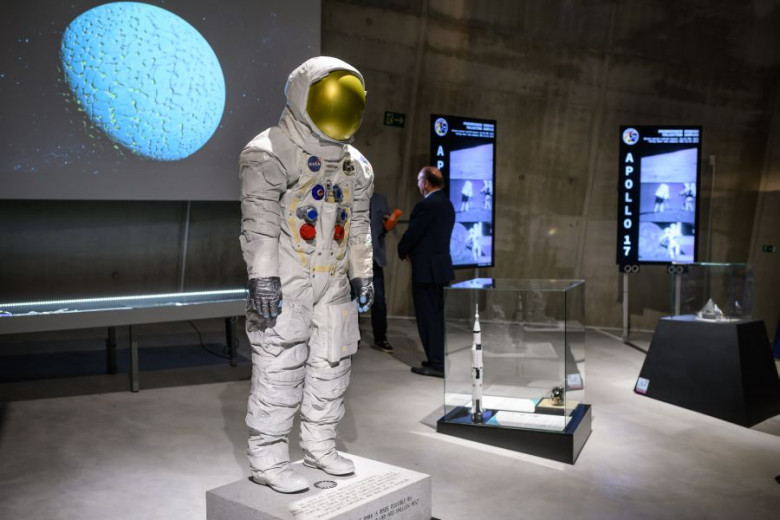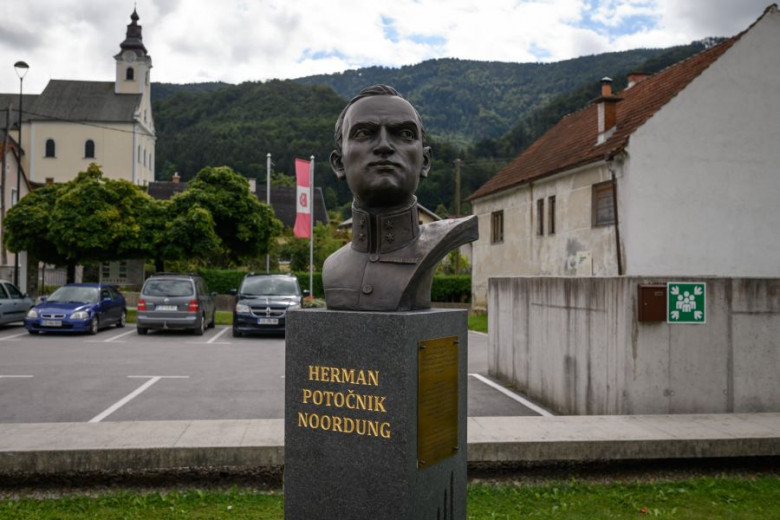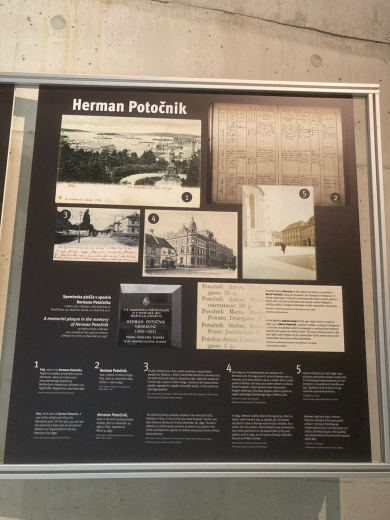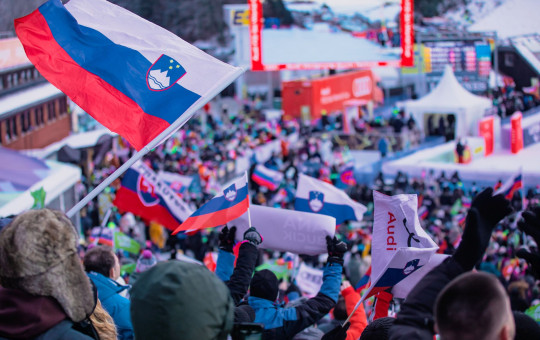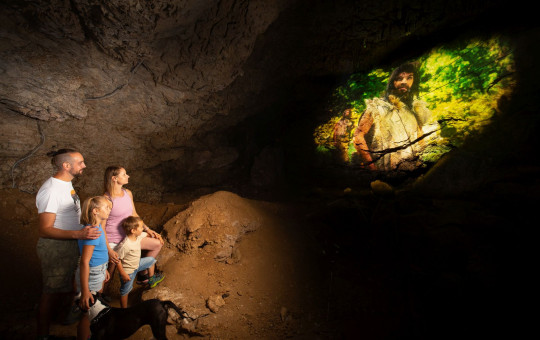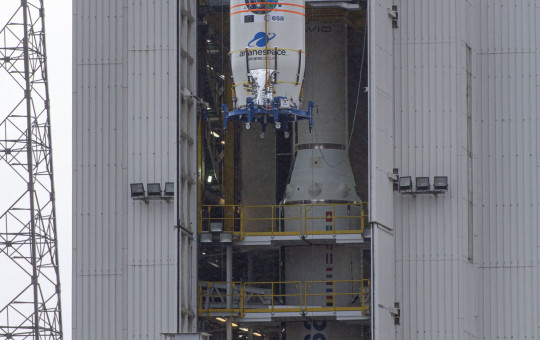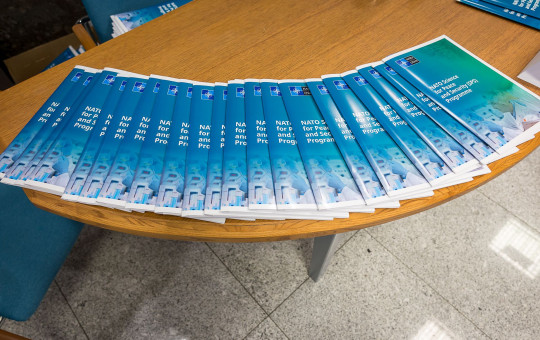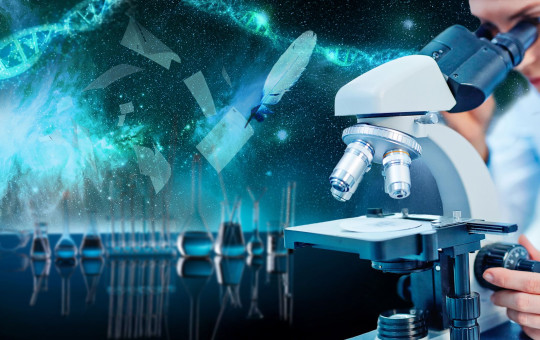Date: 9. September 2020
Time to read: 3 min
After ten months of determined effort and friendly cooperation with the US Embassy in Slovenia, the Herman Potočnik Noordung Center of Space Technologies in Vitanje has put on display one of the most valuable exhibits in Slovenian museum history: a rock from the surface of the Moon and a replica of the spacesuit worn by astronaut Neil Armstrong during his first walk on the Moon.
-
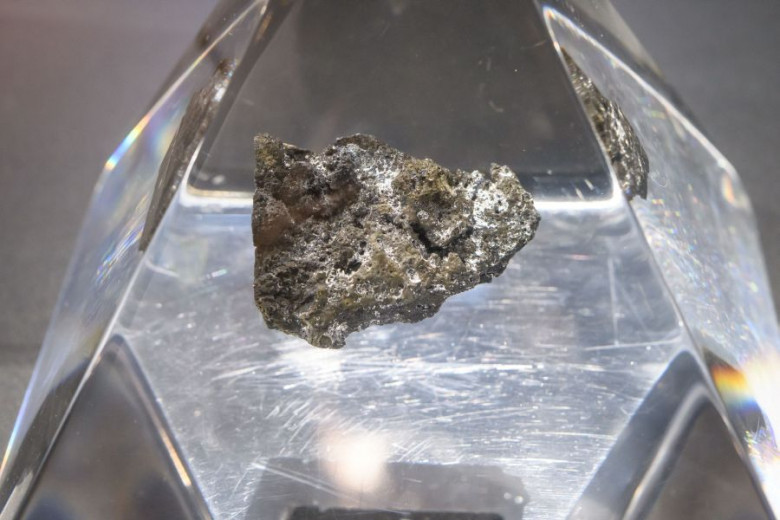 The precious cargo from the Apollo 17 mission, which returned to Earth on 19 December 1972. Photo: Nebojša Tejić/STA
The precious cargo from the Apollo 17 mission, which returned to Earth on 19 December 1972. Photo: Nebojša Tejić/STA
-
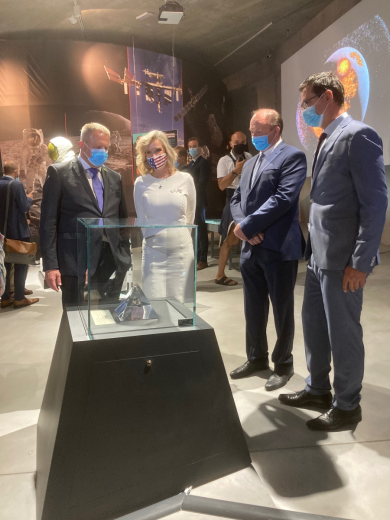 Noordung Centre. Opening of the exhibition displaying the Moon rock which was brought to Earth in 1972 within the Apollo 17 mission, prepared by the Noordung Centre in collaboration with the US Embassy and NASA. On picture: Director of the Noordung Centre Dominik Kobold, Mayor of Vitanje Slavko Vetrih, US Ambassador Lynda C. Blanchard and Minister of Economic Development and Technology Zdravko Počivalšek (from right to left). Photo: Tea Knaflič
Noordung Centre. Opening of the exhibition displaying the Moon rock which was brought to Earth in 1972 within the Apollo 17 mission, prepared by the Noordung Centre in collaboration with the US Embassy and NASA. On picture: Director of the Noordung Centre Dominik Kobold, Mayor of Vitanje Slavko Vetrih, US Ambassador Lynda C. Blanchard and Minister of Economic Development and Technology Zdravko Počivalšek (from right to left). Photo: Tea Knaflič
-
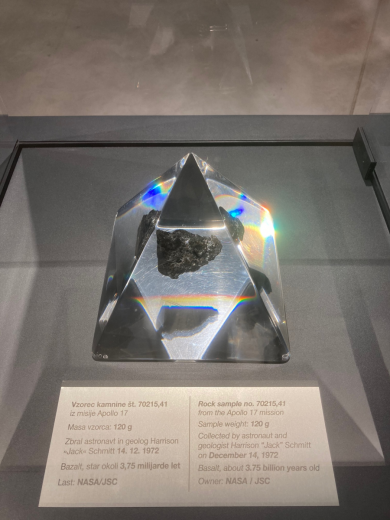 A rock from the surface of the Moon on display at the Noordung Centre until the end of February 2021. Photo: Tea Knaflič
A rock from the surface of the Moon on display at the Noordung Centre until the end of February 2021. Photo: Tea Knaflič
-
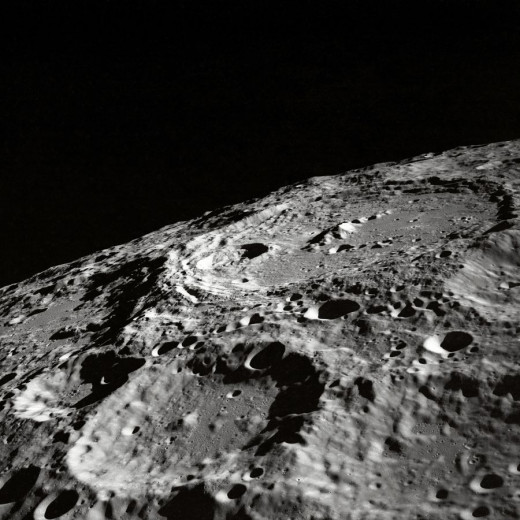 The Moon’s seas are less light-reflecting than its mountains because they are rich in iron and therefore look darker in colour. Photo: Unsplash/Nasa
The Moon’s seas are less light-reflecting than its mountains because they are rich in iron and therefore look darker in colour. Photo: Unsplash/Nasa
-
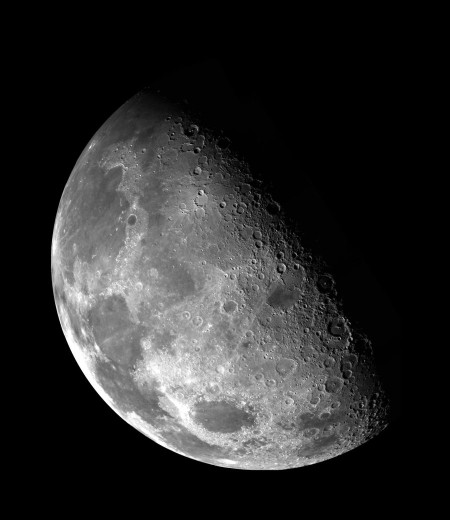 Neil Armstrong and Edwin Aldrin left on the Moon a plaque inscribed: "HERE MEN FROM THE PLANET EARTH FIRST SET FOOT UPON THE MOON, JULY 1969 A.D. WE CAME IN PEACE FOR ALL MANKIND." Photo: Unsplash/Nasa
Neil Armstrong and Edwin Aldrin left on the Moon a plaque inscribed: "HERE MEN FROM THE PLANET EARTH FIRST SET FOOT UPON THE MOON, JULY 1969 A.D. WE CAME IN PEACE FOR ALL MANKIND." Photo: Unsplash/Nasa
The rock is estimated to be about 3.75 billion years old.
The lunar sample, part of which is on display at the Noordung Center, is the largest of all brought to Earth from the Apollo 17 mission. The rock was unusually dark in colour and immediately caught the attention of the landing module’s crew. When the rock was successfully brought to the Earth, it was assigned number 70215, which can also be checked on the website of the Lunar and Planetary Institute, where much more information is available about the rock itself and the exploration of the Moon in general. A piece of this interesting rock is intended for displays around the world.
The rock was sent to Slovenia according to strict protocols directly from NASA headquarters in Houston, where it will be returned after the exhibition.
Director of the Noordung Centre Dr Dominik Kobold says of the famous rock: “The precious cargo arrived with the Apollo 17 mission, which returned to Earth on 19 December 1972. The artefact is of inestimable value and is one of the museum heritage exhibits of the highest value that have ever been displayed in Slovenia.”
What is the origin of the Moon? Science has been dealing with theories about the Moon’s origin for many years. One the various popular hypotheses is a theory according to which the Moon was once part of the Earth. An unequivocal answer will most likely be obtained from the study of lunar aggregates.
A replica of Neil Armstrong’s spacesuit
The launch of the Apollo programme was fuelled by rivalry between the Soviet Union and the United States. Unimaginable effort and the participation of more than 400,000 people were needed to achieve the desired goal – the landing of man on the Moon. Neil Armstrong, the commander of Apollo 11, landed on the lunar surface on his second and final space flight in 1969, becoming the first person to set foot on Earth’s natural satellite.
A replica of his spacesuit, with all the details of the original, is now on display in Slovenia.
The spacesuit had to protect the astronaut from extreme temperatures, strong sunlight and micrometeorites. It also had to provide the astronaut with pure oxygen to breathe, rather than the mixture of nitrogen and oxygen that we breathe on Earth, due to the low pressure inside the suit. A replica of his spacesuit, with all the details of the original, is now proudly on display in Slovenia. The replica was made by the Smithsonian National Museum of Natural History last year to celebrate the 50th anniversary of the first landing on the Moon. A total of 15 replicas were made, but only one is intended for tours of various institutions across Europe.
Herman Potočnik, Noordung
A pertinent question is whether the rock from the surface of the Moon would be here today at if it were not for our compatriot, Slovenian rocket engineer, officer and pioneer of cosmonautics Herman Potočnik.
Herman Potočnik made a great contribution to connecting Slovenia with other space researchers around the world.
He was born in 1892 and his vision was light years ahead of his time. He saw the possibility of obtaining energy from the oceans, wind and even the sun. Potočnik’s book The Problem of Space Travel, published in 1928, became a foundation for the further conquest of space.
The Noordung Centre
The Noordung Centre, a very interesting place to visit at all times, is really something special at the moment. No lover of the universe and of the unknown or anyone just curious by nature will want to miss this exhibition!
-
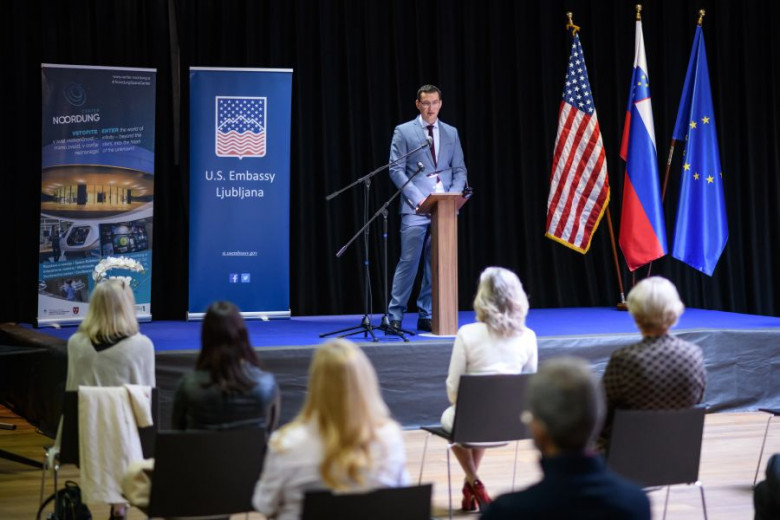 Introductory speech by Dominik Kobold, Director of the Noordung Centre. Photo: Nebojša Tejić/STA
Introductory speech by Dominik Kobold, Director of the Noordung Centre. Photo: Nebojša Tejić/STA
-
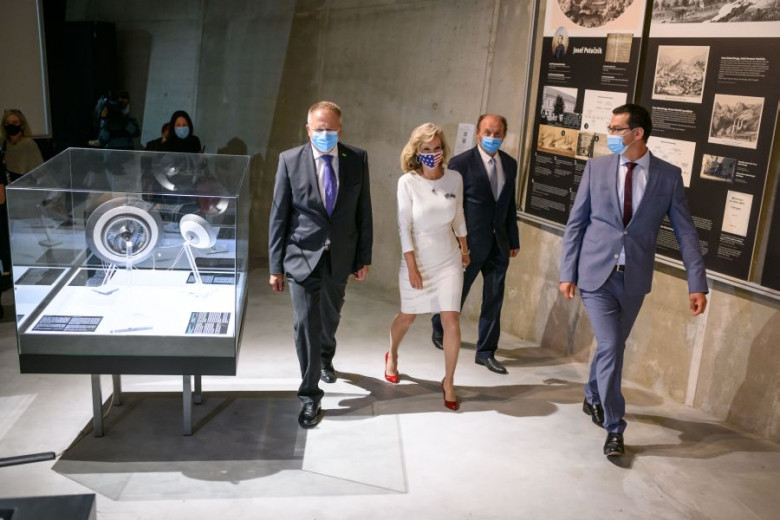 The opening of the exhibition was attended by Director of the Noordung Centre Dominik Kobold, Mayor of Vitanje Slavko Vetrih, US Ambassador Lynda C. Blanchard and Minister of Economic Development and Technology Zdravko Počivalšek (from right to left). Photo: Nebojša Tejić/STA
The opening of the exhibition was attended by Director of the Noordung Centre Dominik Kobold, Mayor of Vitanje Slavko Vetrih, US Ambassador Lynda C. Blanchard and Minister of Economic Development and Technology Zdravko Počivalšek (from right to left). Photo: Nebojša Tejić/STA
-
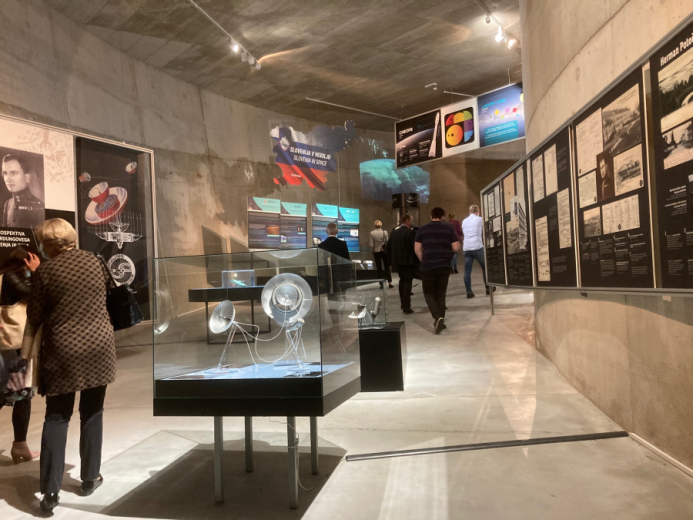 Noordung Centre. Photo: Tea Knaflič
Noordung Centre. Photo: Tea Knaflič
-
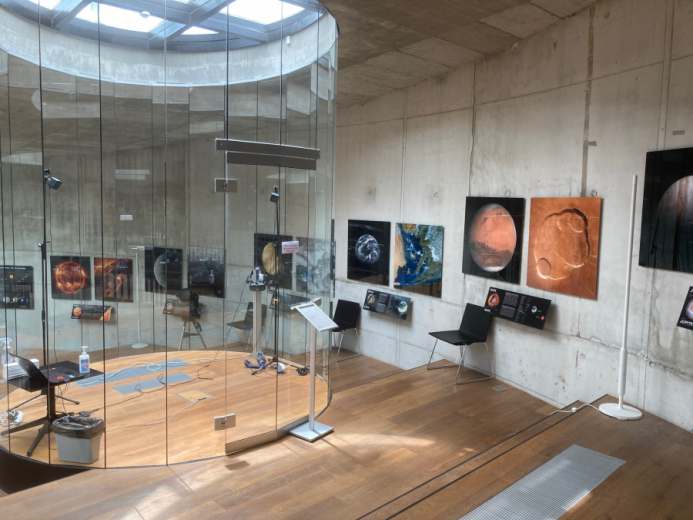 Noordung Centre. Photo: Tea Knaflič
Noordung Centre. Photo: Tea Knaflič
-
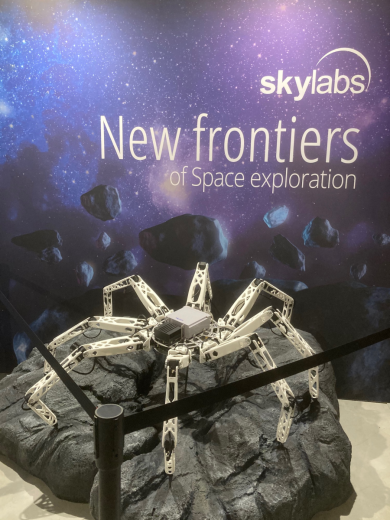 Space laboratory. Photo: Tea Knaflič
Space laboratory. Photo: Tea Knaflič
-
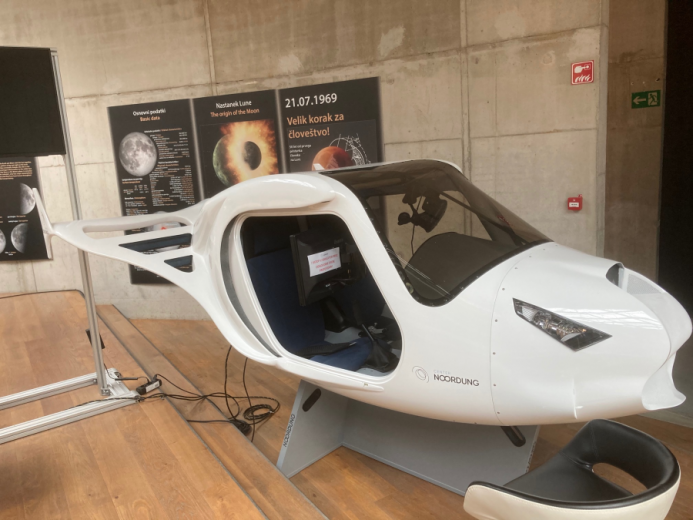 Electra VR space flight simulator. Photo: Tea Knaflič
Electra VR space flight simulator. Photo: Tea Knaflič

